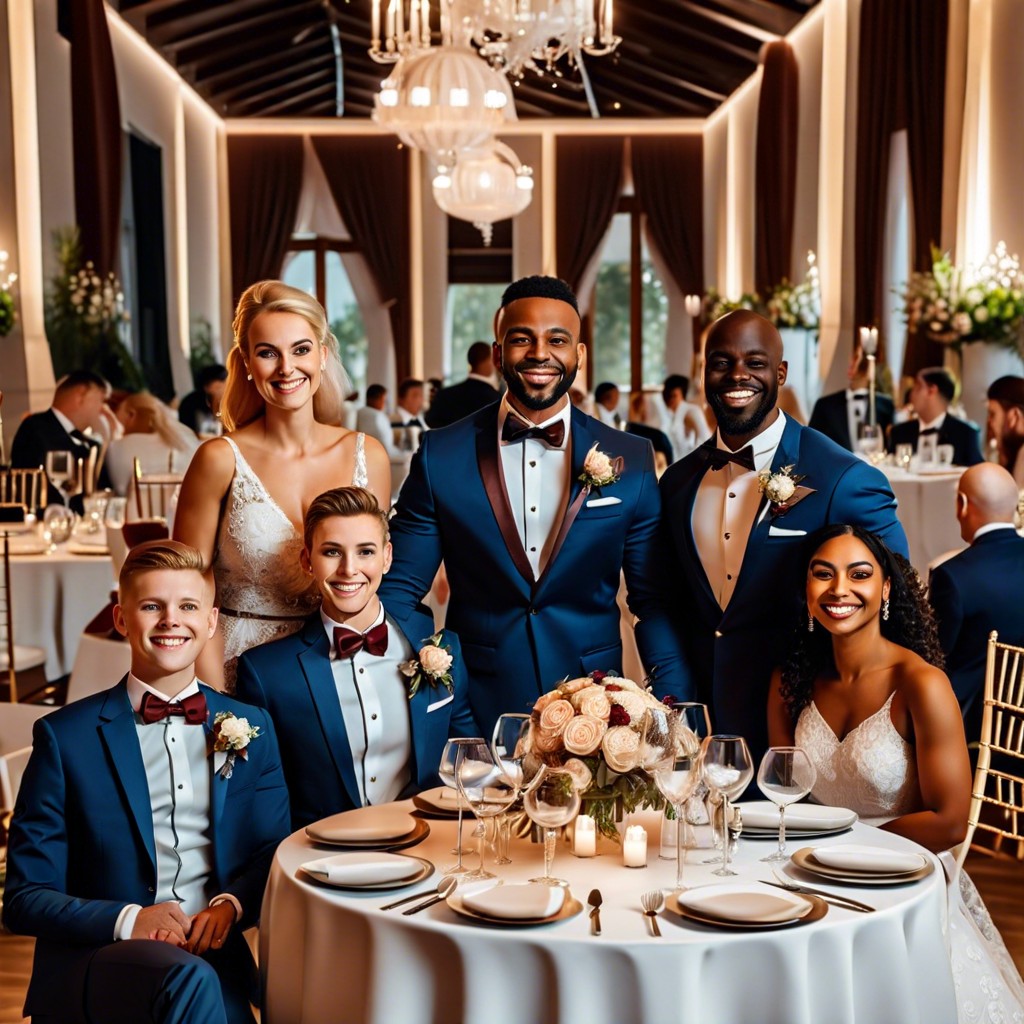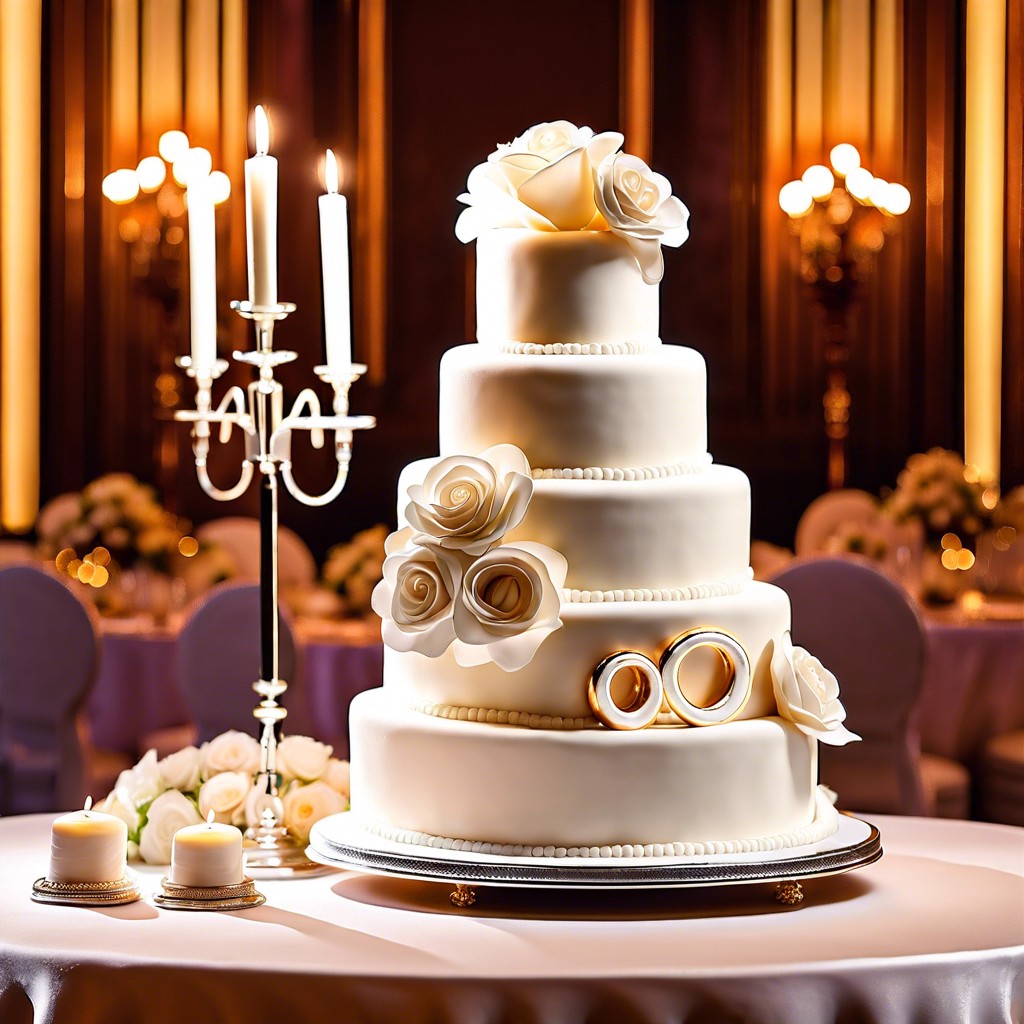This article provides a detailed overview of the factors that determine the average wedding size and how varying preferences and budgets can influence this number.
Key takeaways:
- Average wedding size in the US is 131 guests.
- Guest count impacts overall wedding cost.
- Factors influencing guest count include venue capacity, cultural expectations, budget constraints, and personal preferences.
- Larger guest count correlates with higher expenses for venues, catering, decorations, invitations, and favors.
- Consider budget, venue capacity, guest importance, intimacy level, and wedding type to decide on the right wedding size.
Average Guest Count for Weddings

On average, weddings in the United States have approximately 131 guests. This number, however, is influenced by cultural norms, the couple’s social circle, and regional traditions. Urban areas often witness larger wedding receptions due to higher population density and greater social networks, while rural or suburban weddings might have a more intimate gathering.
When budgeting for your wedding, remember that the number of guests directly impacts your overall cost. Venues, catering, and rentals charge per head, making your guest count a significant leverage point for your wedding’s financial planning. Reducing the guest list by even ten people can significantly decrease expenses.
An essential aspect to consider is the inclusion of plus-ones and children. Policies on these can dramatically affect your final guest count. Moreover, the more guests you invite, the larger the venue and logistical needs, from seating arrangements to transportation. It’s crucial to balance your dream wedding with the reality of what you can comfortably manage and afford.
Factors Influencing Average Wedding Size
Venue capacity plays a significant role in determining how many guests you can invite. Opting for an intimate garden may naturally limit your count, whereas a grand ballroom suggests a larger gathering.
Cultural expectations often shape the size of a wedding. Certain cultures embrace large, community-wide celebrations, while others favor smaller, family-centric ceremonies.
Budget constraints are a practical consideration. A higher guest count typically increases the overall cost. Catering, rentals, and space can all vary significantly with each additional attendee.
Family dynamics can influence the list. Couples with large extended families might find themselves planning for more guests, while those with smaller or geographically dispersed relatives might lean towards a smaller event.
Personal preference should not be overlooked. Some prefer the buzz of a big wedding, while others delight in the charm and simplicity of a smaller gathering.
Remember that each couple’s situation is unique, and the factors listed can interact in complex ways to shape the final guest list.
Average Cost Per Wedding Size
Understanding the cost dynamics is crucial when planning a wedding. Typically, a larger guest count correlates directly with a higher overall expense. Here are key points to keep in mind:
- Venue Costs: These often scale with guest count. A larger group may require a more expensive venue.
- Catering Expenses: More guests mean more mouths to feed. Catering is usually priced per head, so the cost can escalate quickly as your guest list grows.
- Decorations and Rentals: A bigger space to accommodate more guests might necessitate extra decor and furniture rentals.
- Invitations and Stationery: Costs for printed materials increase with each additional invitation suite.
- Favors and Gifts: If you’re providing favors, the cost multiplies by the number of guests.
Remember, economies of scale can play a role. Some vendors offer discounts for larger events, so it’s worth asking about price breaks once your guest list exceeds certain thresholds.
How to Decide Which Size Is Right for You
When selecting the appropriate size for your wedding, consider both personal preferences and practical aspects:
1. Budget Constraints: Review your financials to determine what you can comfortably afford. Larger weddings generally require a higher budget.
2. Venue Capacity: Ensure that your desired venue can accommodate your guest list while meeting comfort and safety standards.
3. Guest Importance: Draft a must-invite list to include only those significant to you and your partner. This can range from immediate family to close friends.
4. Intimacy Level: Reflect on whether you envision a large celebration or a more intimate gathering where you can interact with each guest personally.
5. Wedding Type: Themed, destination, or traditional weddings might influence the number of attendees.
By weighing these factors, you’ll be better positioned to decide the ideal wedding size that aligns with your vision and means.
Tips for Sticking to a Small Guest List
Creating a small guest list requires strategic decision-making and clear communication. Here are a few practical tips to ensure you maintain a small, intimate gathering:
1. Set a firm limit: Establish a maximum number of guests based on your budget and venue capacity to guide your invites.
2. Stick to your guns: Be prepared to politely decline requests to extend the list. Remember, it’s your special day.
3. Immediate family first: Prioritize parents, siblings, and grandparents before considering extended family.
4. Be selective with plus-ones: Only offer plus-ones to guests who are married, engaged, or in a long-term relationship.
5. Consider a destination wedding: They often lead to smaller guest lists due to travel requirements.
6. Opt for an adults-only celebration: While children add joy, they also increase your guest count. Specify an age limit on your invites.
7. Utilize technology: If you’re worried about leaving people out, live-streaming your ceremony is a thoughtful way to include those not present.
8. Personalize your invitations: A hand-written note explaining your choice for a small wedding can help soothe any hurt feelings.
By embracing these strategies, you can keep your guest list small without sacrificing the warmth and joy of your celebration.
Keep reading:





